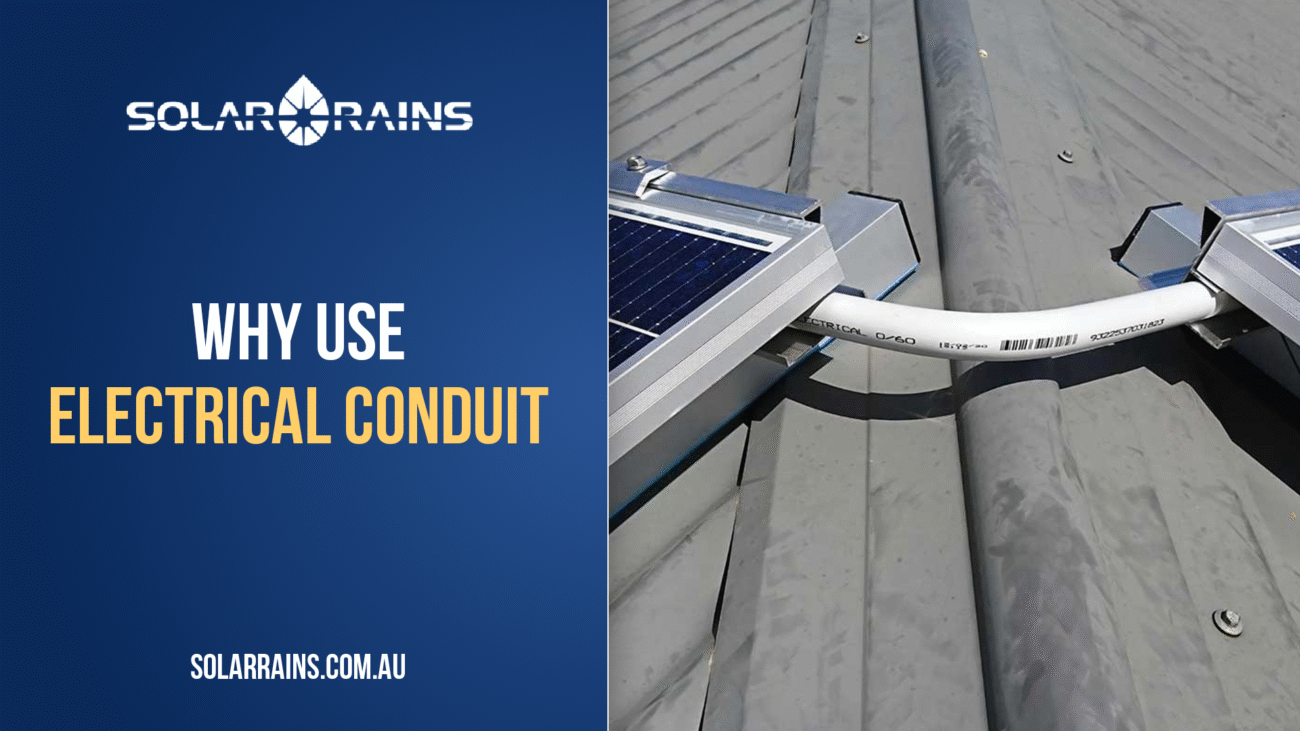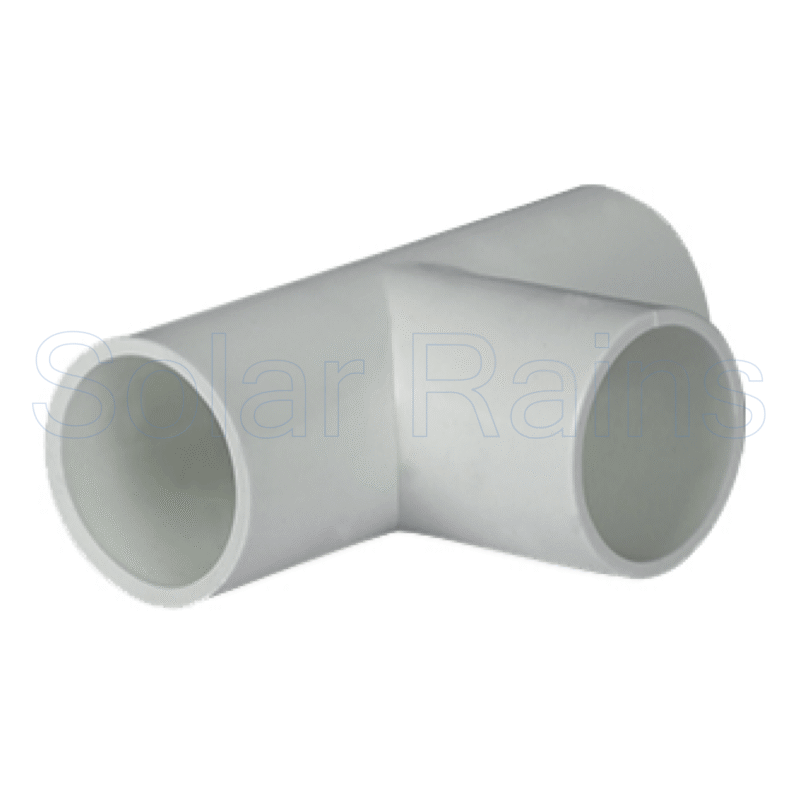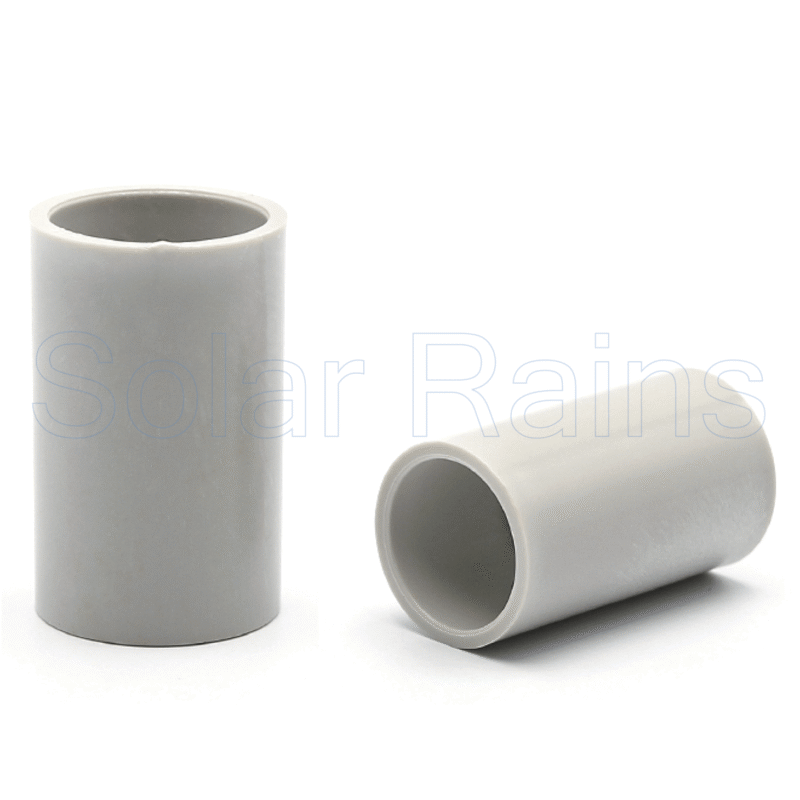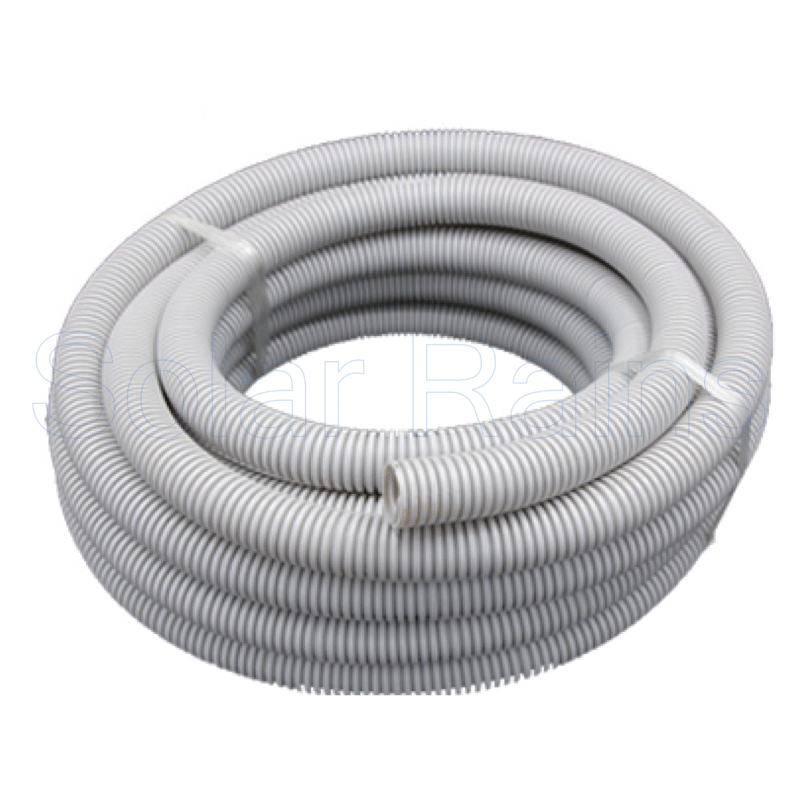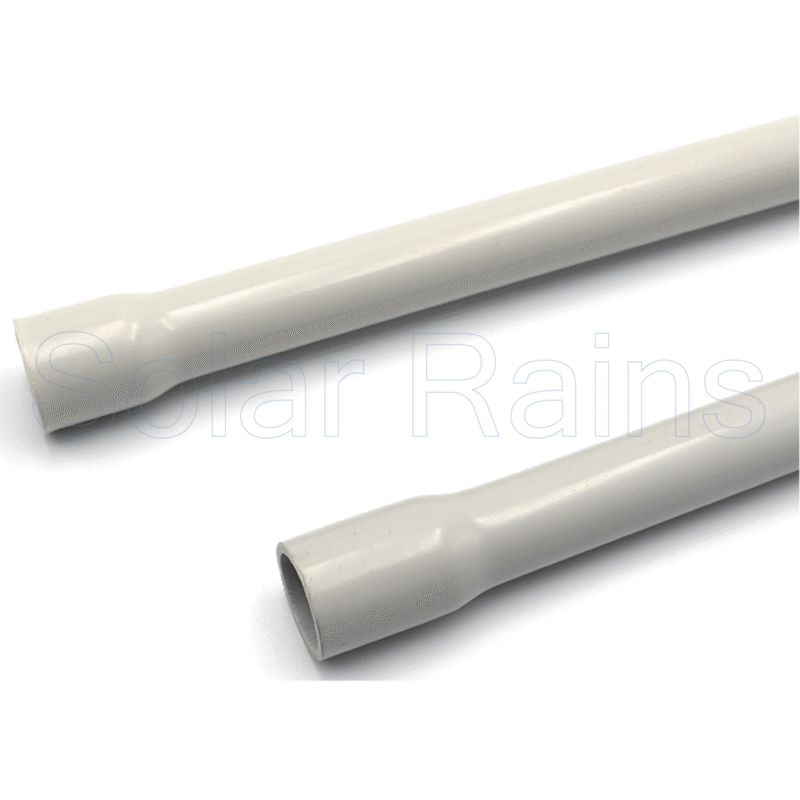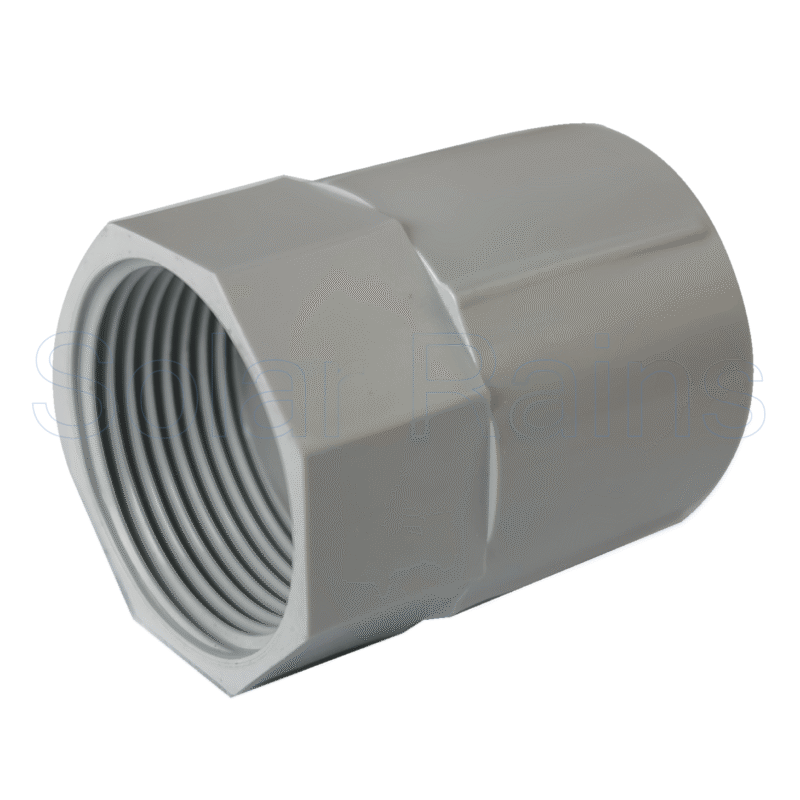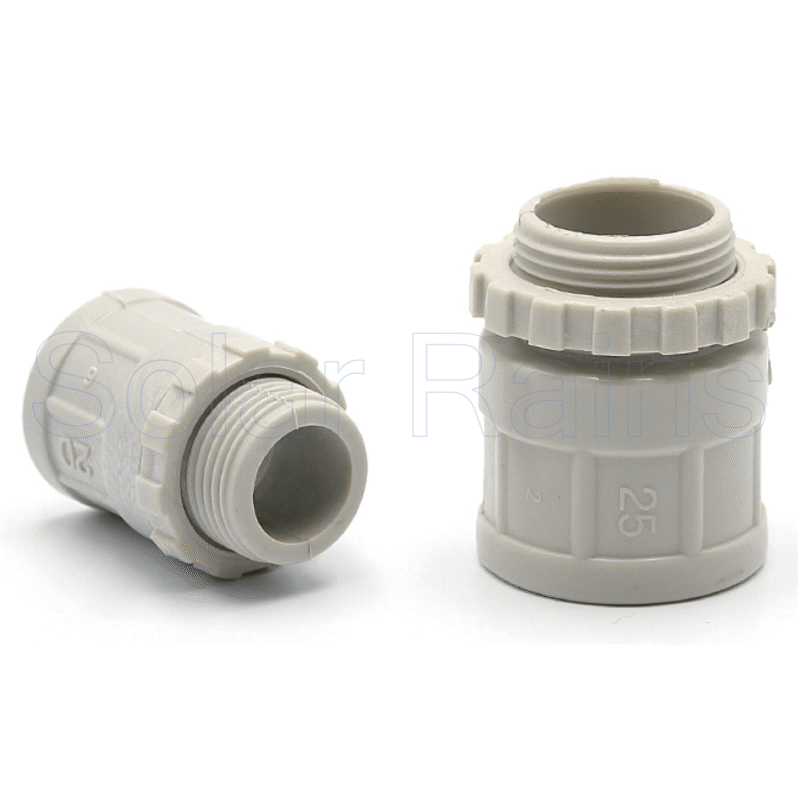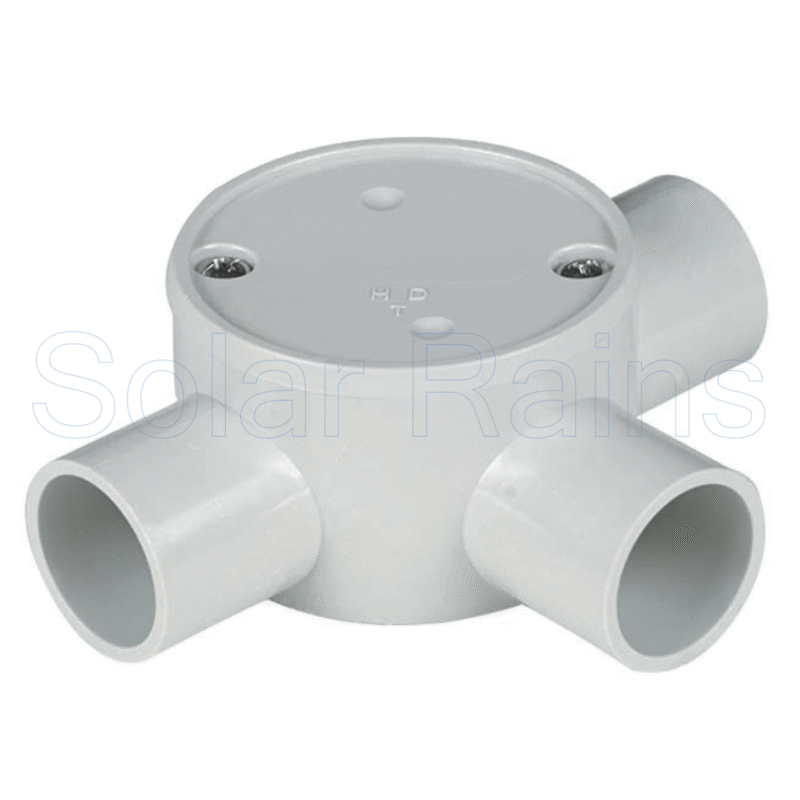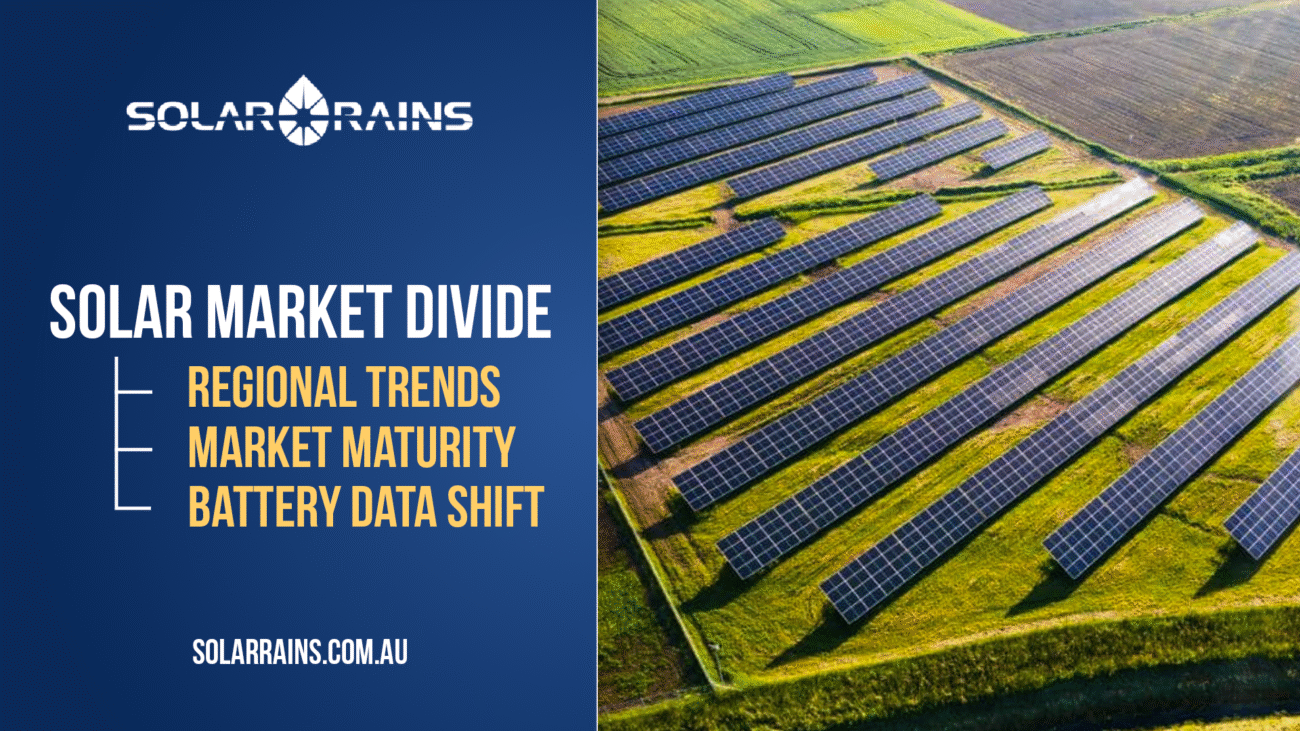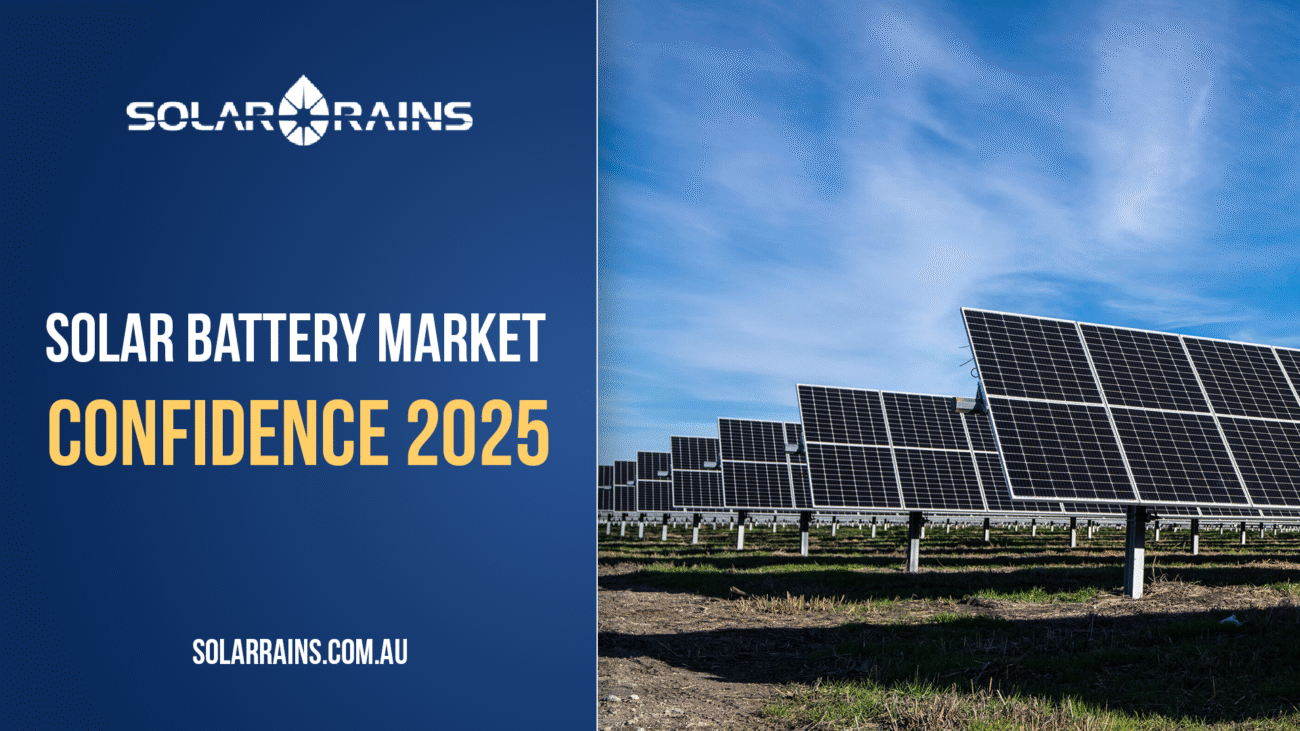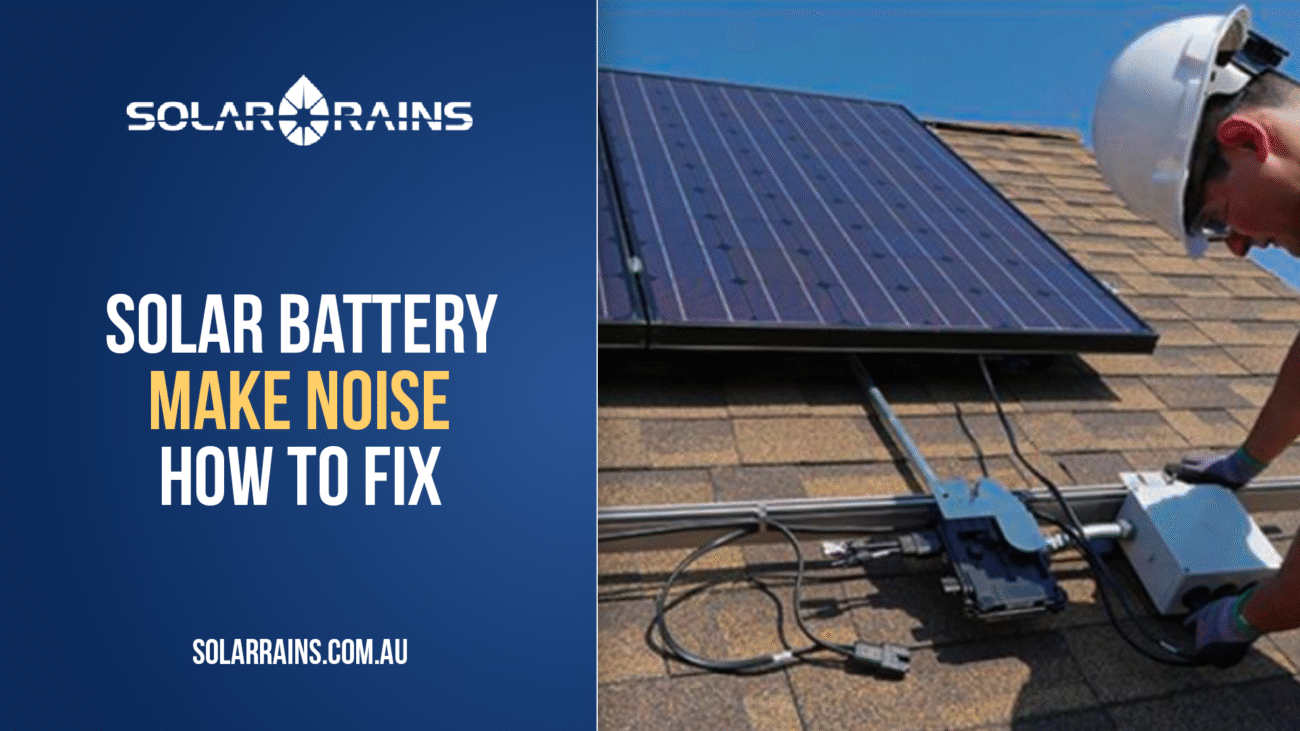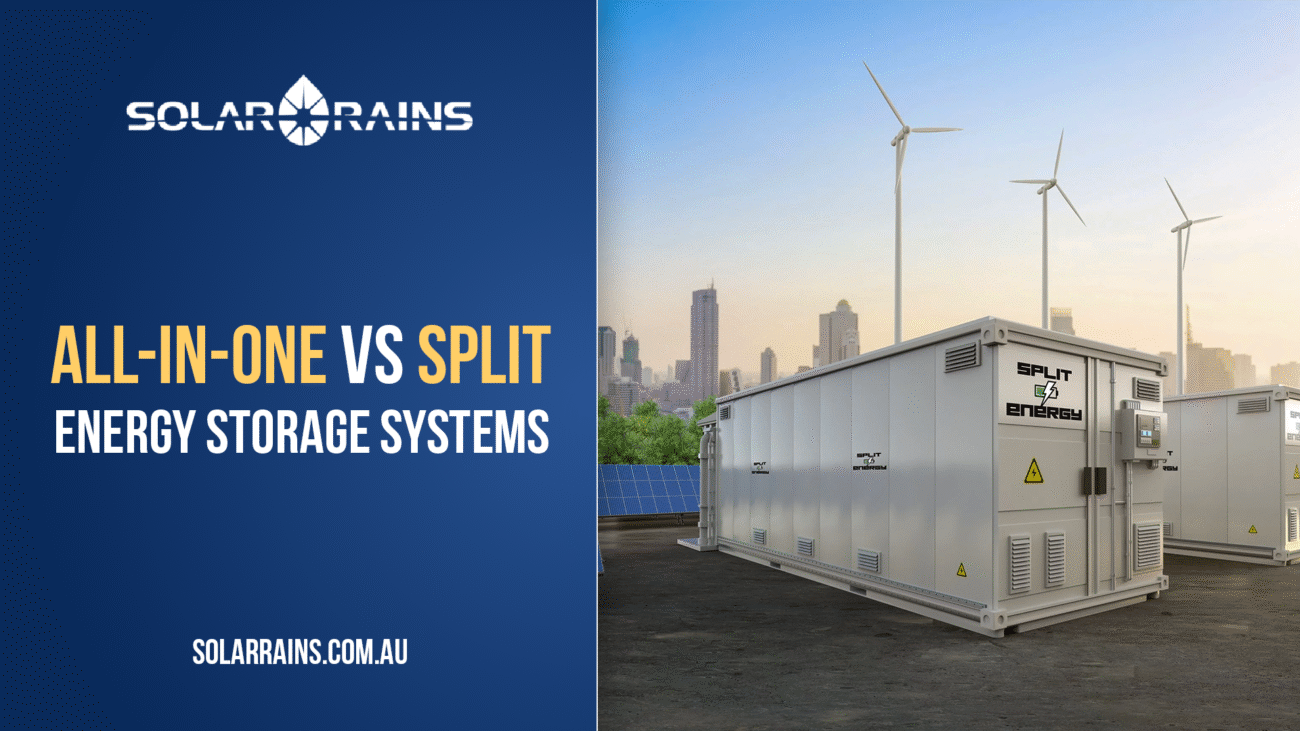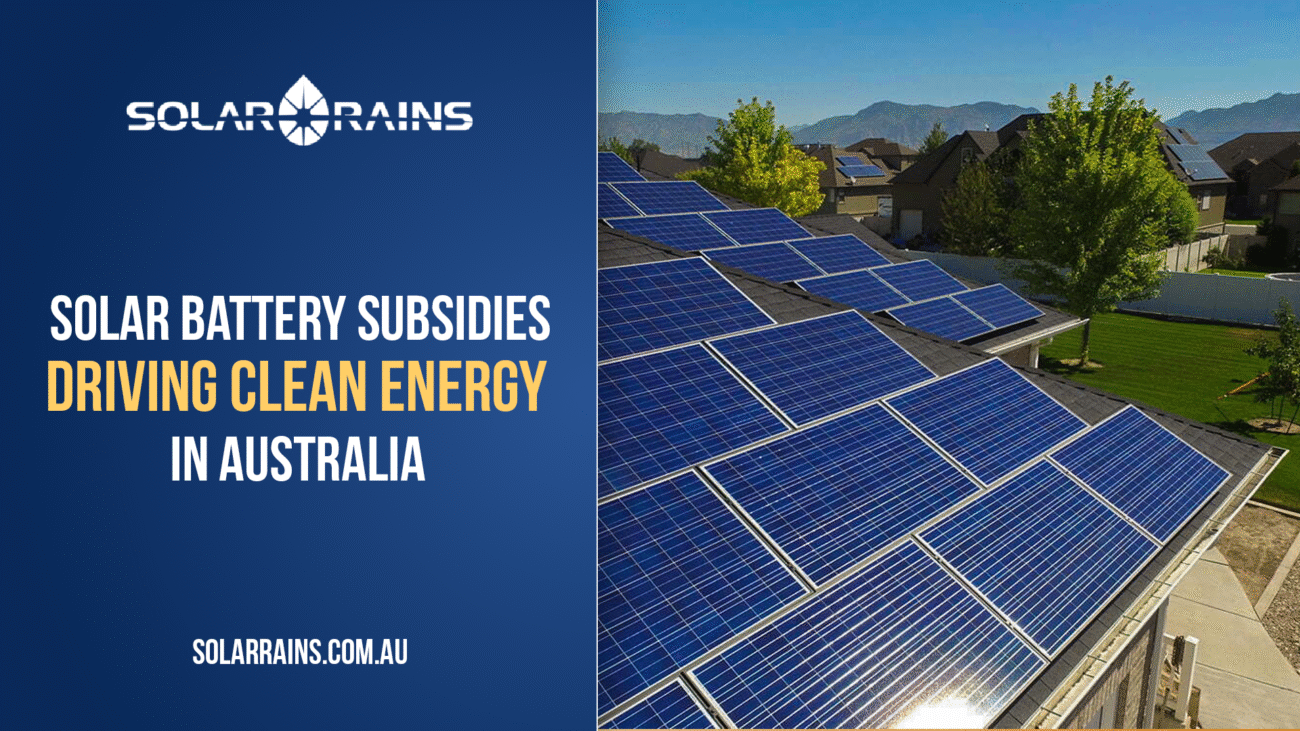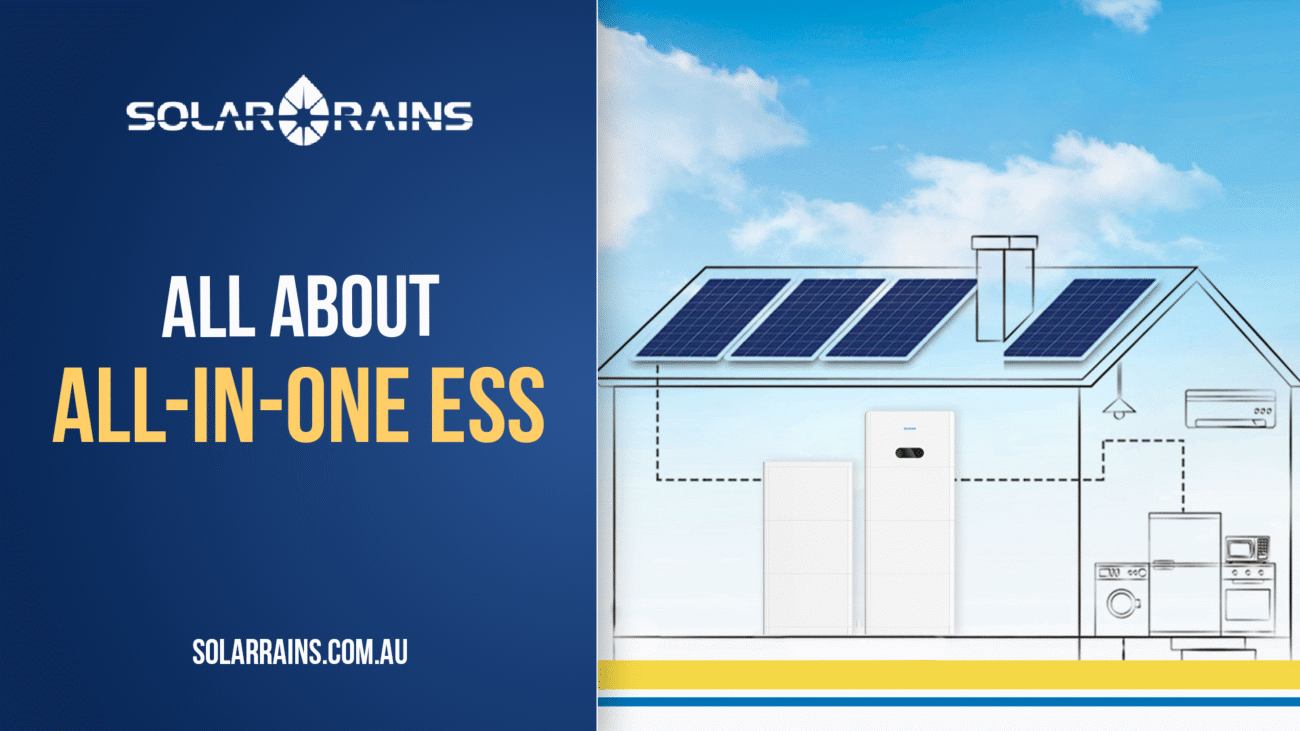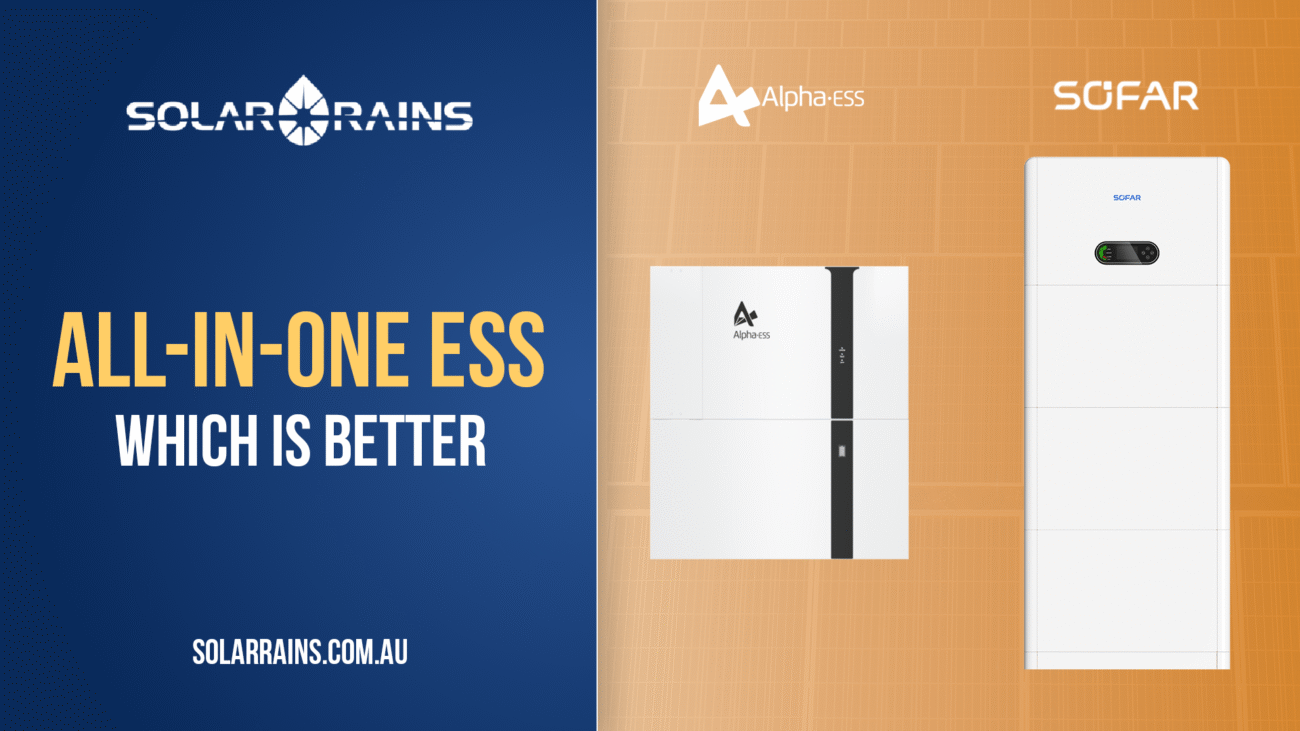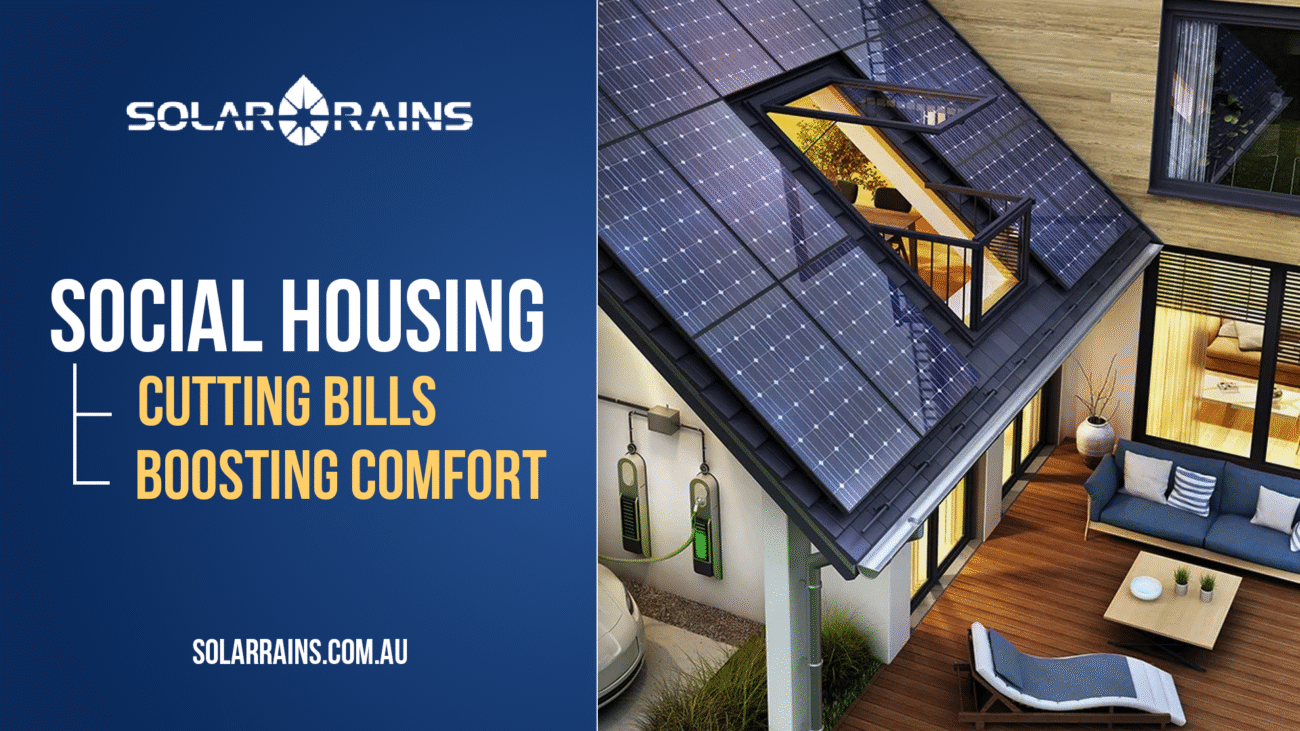Electrical conduit may not be the most glamorous part of your solar system, but it’s one of the most essential. Whether you’re managing a rooftop PV array or a commercial solar project, choosing the right electrical conduit ensures protection, efficiency, and long-term performance. In this guide, Solar Rains breaks down why conduit matters and how to use it correctly.
What is an Electrical Conduit?
An electrical conduit is a protective tubing used to route and shield electrical wiring in a solar system. It keeps wires organised, guards against weather and UV exposure, and reduces the risk of mechanical or chemical damage.
Common conduit types include:
- PVC (Polyvinyl Chloride): Lightweight and cost-effective, great for indoor or protected outdoor use.
- Flexible Conduit: Ideal for tight spaces or curved installations.
- Metallic Conduit (EMT or galvanised): Suitable for industrial-grade protection.
- HDPE or Nylon Conduits: Known for impact resistance and durability in harsh environments.
In the solar industry, conduit is critical to meet both safety codes and durability expectations.
Why Do Solar Systems Need Electrical Conduits?
Electrical conduit systems are essential for the long-term safety, durability, and compliance of solar PV installations, especially in harsh Australian conditions. Beyond simple cable routing, conduits provide a structured and code-compliant approach to mechanical protection, UV resistance, fire safety, and system maintainability.
Weatherproofing & UV Protection
Australia’s climate presents a unique challenge for solar infrastructure. Rooftop solar installations in cities like Sydney, Brisbane, or Perth face extreme UV radiation, salt-laden winds, torrential rainfall, and high summer temperatures.
Why this matters:
Direct exposure to sunlight can degrade cable insulation, especially in DC circuits where constant current and voltage stress can accelerate insulation cracking. Moisture ingress further worsens the issue, leading to corrosion, arc faults, or insulation breakdown.
How conduit helps:
Electrical conduits, especially UV-stabilised PVC, HDPE, or metal variants, act as a protective sleeve that shields internal solar cables from environmental stressors. This extends the life of the cable, improves fire safety, and maintains system performance over time.
Mechanical Protection from Environmental and Human Hazards
Solar systems are not only exposed to the weather but also to physical disturbances from pests, maintenance personnel, or roof-related construction work.
Common risks include:
- Birds or rodents chewing through cable jackets
- Roofers or tradesmen stepping on unprotected wiring
- Thermal expansion or cable movement causing abrasion at sharp edges
Why conduit is vital:
Rigid or corrugated conduits offer a robust first line of defence against these impacts. They absorb compression, shield against gnawing or nesting pests, and reduce the risk of short circuits or insulation abrasion over time. For commercial rooftops, this is especially important where foot traffic is common.
Neat Installation & Cable Management
Good cable management isn’t just about aesthetics—it plays a functional role in airflow, troubleshooting, and safety inspections.
Without conduit:
Cables may droop, cross over metal components, or become entangled—making it harder for installers or inspectors to:
- Verify correct polarity
- Trace faults or breaks
- Add additional panel strings or batteries
With conduit:
Solar cable runs are streamlined, labelled, and secure—reducing clutter and ensuring that future upgrades or replacements can be performed without re-routing the entire system. Well-routed conduit pathways also allow better heat dissipation, helping prevent cable overheating.
Code Compliance & Electrical Safety Standards
One of the most important reasons to use electrical conduit is regulatory compliance. In Australia, all solar installations must meet the requirements outlined in AS/NZS 3000:2018 (Wiring Rules) and AS/NZS 5033:2021 (Installation of PV Systems).
Key requirements include:
- Clause 3.9.4.2 of AS/NZS 5033 mandates that DC cables be enclosed in conduit or cable ducting where exposed to UV, risk of mechanical damage, or near combustible surfaces.
- Cables must be labelled, securely fixed, and separated from incompatible systems (e.g., AC cables).
Failure to comply may lead to:
- Voided manufacturer warranties
- Failed electrical inspections
- Increased risk of fire or electrocution
Using the correct conduit with appropriate ratings for UV, voltage, temperature, and mechanical strength is the easiest way to stay compliant and maintain system integrity.
Key Functions of Electrical Conduit in Solar Installations
| Function | Purpose |
| Physical Protection | Prevents crushing, cutting, or UV degradation of solar cables. |
| Fire Safety | Isolates wiring, reduces ignition risks, and contains potential arcing. |
| Moisture Resistance | Prevents water ingress in junctions and connectors. |
| Thermal Insulation | Reduces heat exposure to cables in rooftop environments. |
| Long-Term Durability | Extends the life of wiring for 20+ years of system operation. |
Choosing the Right Electrical Conduit for Solar
Match Conduit Type to Application
- PVC is economical and fine for shaded areas or underground.
- Flexible corrugated conduit works well between solar panels and roof entries.
- Metallic or reinforced conduit may be required for ground-level, exposed, or industrial settings.
For rooftop solar in Australia, UV-rated corrugated conduit is commonly used.
Sizing the Conduit Correctly
Choose conduit with 25–30% more internal diameter than your cable bundle to allow heat dissipation and easy pulling. Overcrowded conduit can trap heat and fail inspection.
Use Proper Fittings
Ensure all elbows, junction boxes, and saddles are compatible with the conduit material. Loose fittings or poor sealing may allow moisture ingress.
Solar Rains offers high-grade conduit fittings and accessories designed specifically for solar DC systems:
View Conduit Accessories Collection
Colour Coding & Labelling
Use black for outdoor DC cables (UV-stabilised), grey for indoor, and red for emergency or AC circuits. Always label both ends of each conduit run.
Installation Tips for Long-Term Reliability
- Secure every 1m–1.5m using UV-rated saddles or brackets.
- Avoid sharp bends that exceed the conduit’s minimum bend radius.
- Seal roof penetrations with flashing (e.g., Dektite silicone-based products).
- Run separate conduit for AC and DC wiring to reduce electromagnetic interference.
- Use bushings at conduit entry/exit points to prevent cable abrasion.
Common Mistakes to Avoid
- Using non-UV-rated-stabilised conduit in outdoor environments
- Overfilling conduit with cables, causing overheating.
- Inadequate mechanical support on roof installations.
- Mixing incompatible materials, e.g., metal conduit with plastic fittings.
- Forgetting to seal open ends against insects, dust, or water.
Where to Buy Quality Conduit for Solar Systems
For long-lasting, code-compliant conduit products, Solar Rains offers:
- UV-rated 25mm & 20mm conduits
- Matching elbows & tees
- Fitting kits with bushings, glands & saddles
- Installation support from local solar experts
Explore our range here: Conduit Fitting Collection at Solar Rains
FAQs
For small residential setups (e.g., 5–10kW), 20mm to 25mm is typical. Larger systems may need 32mm or bigger. Size depends on the number and gauge of cables.
No. AS/NZS 3000 requires separate conduit paths for AC and DC to reduce interference and improve safety.
Only if it’s UV-rated. Standard indoor PVC may become brittle and crack under sunlight.
Every 6-12 months. Look for cracks, loose fittings, discolouration, or rodent damage.
Metal offers superior impact resistance and fire protection, but plastic (UV-stabilised) is cheaper, lighter, and easier to install.
Minimal usually 3–5% of total system cost, but it delivers massive value in safety, compliance & longevity.
Yes, but it’s easier to plan conduit layout before panel installation. Retrofitting may require more roof access and drilling.
Conclusion: Don’t Underestimate the Power of Conduit
Solar panels may be the stars of your system, but electrical conduit is the invisible backbone that keeps it safe, efficient, and code-compliant. Whether you’re a homeowner installing a rooftop array or a commercial developer managing multiple buildings, choosing the right conduit and fittings ensures decades of reliable operation.

